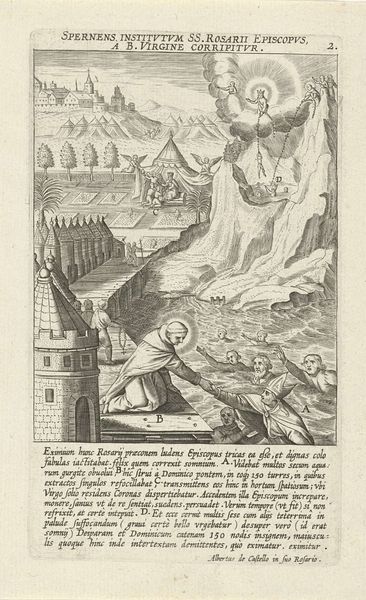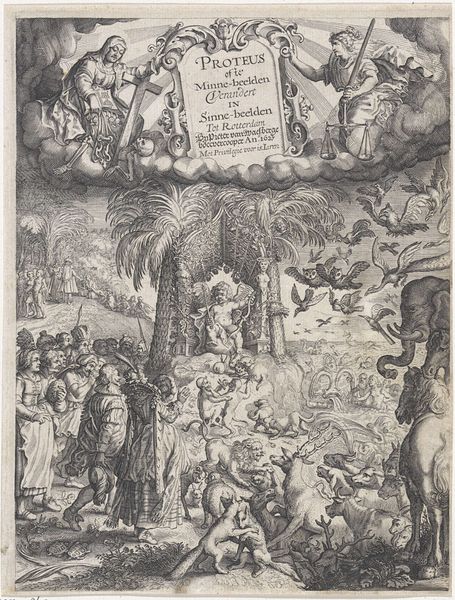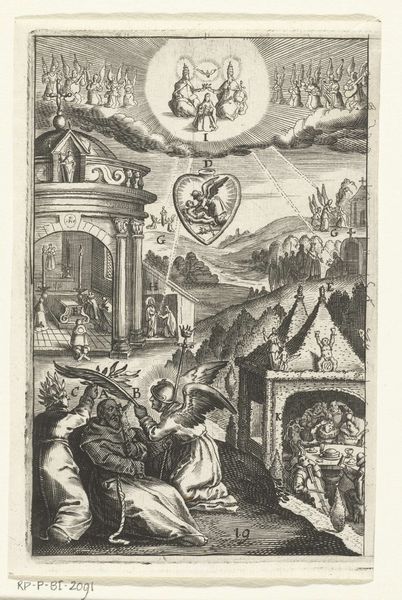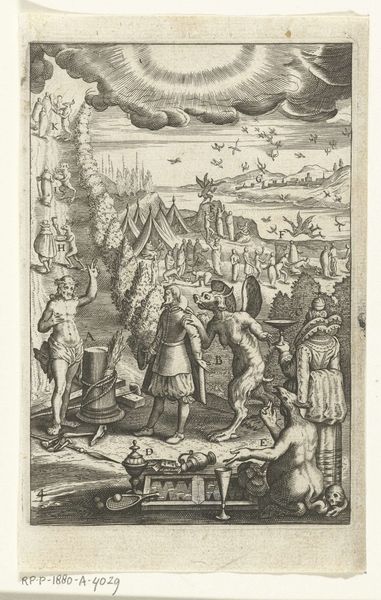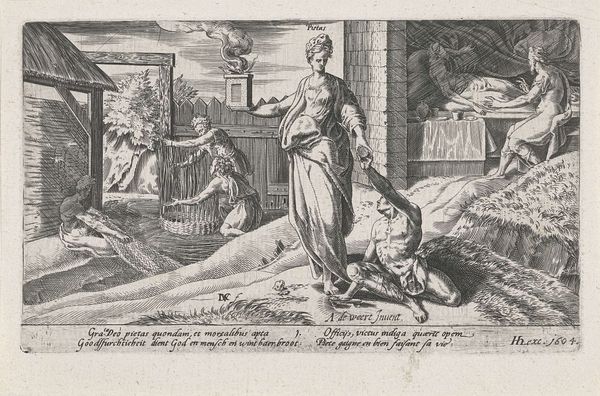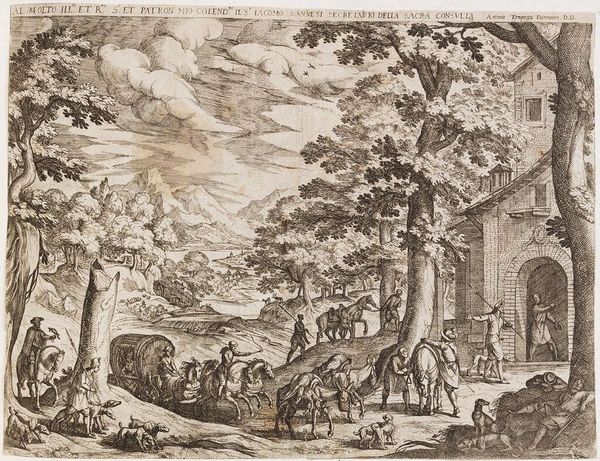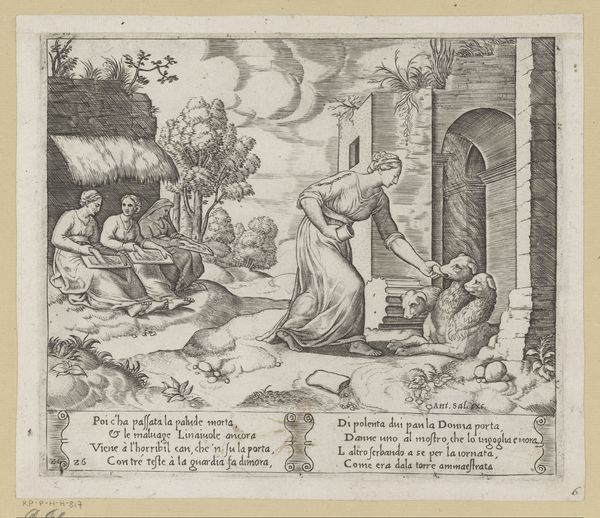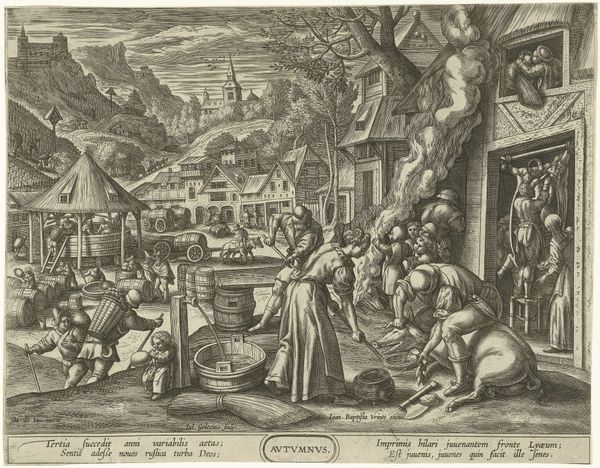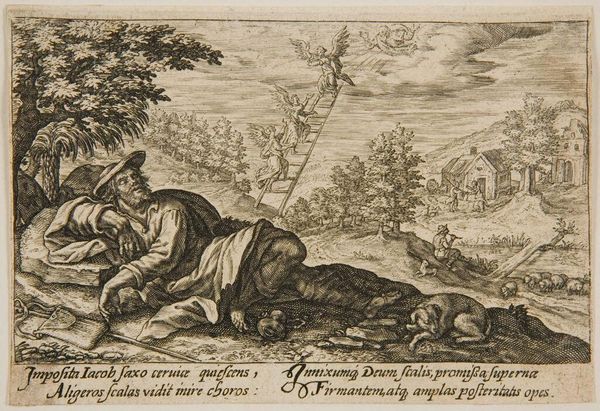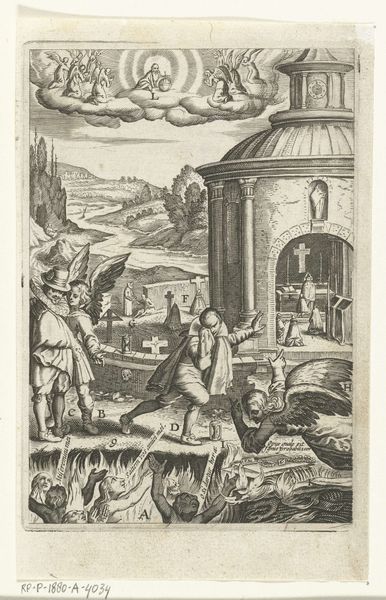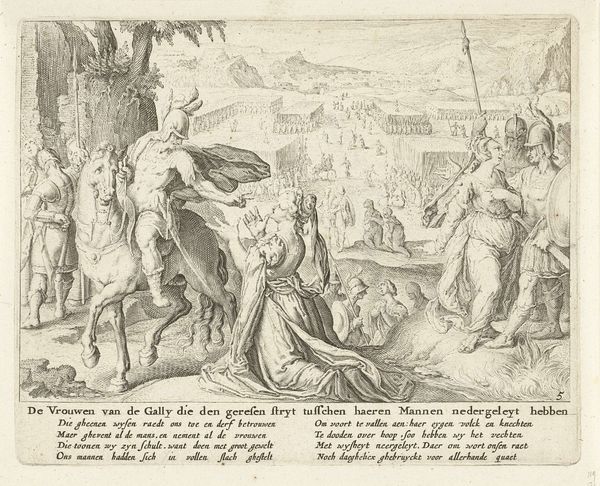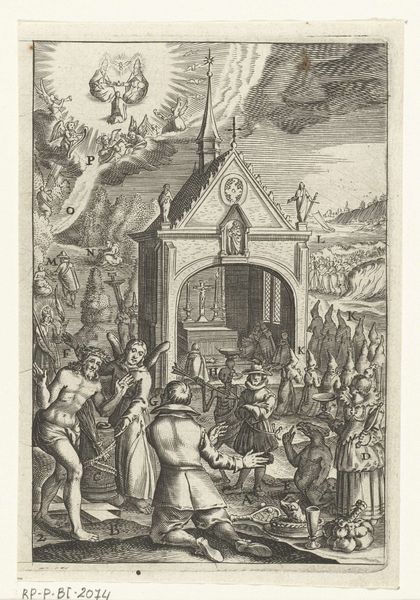
print, engraving
#
narrative-art
#
baroque
# print
#
landscape
#
figuration
#
line
#
history-painting
#
engraving
Dimensions: height 150 mm, width 89 mm
Copyright: Rijks Museum: Open Domain
Curator: Take a look at this intricate print; it’s by Theodoor Galle, created around 1610. It's entitled “Mirakel van de herdersdochter," or "Miracle of the Shepherdess". What's your first impression? Editor: It’s densely packed, almost dreamlike. The contrast between the dark lines and the white space gives it this very ethereal quality, but with an underlying sense of... well, drama. A theatrical scene unfolding. Curator: Exactly. Galle's technique really lends itself to that Baroque sensibility. It feels dramatic and, dare I say, a bit unsettling, like peering into a vision. As a print, the line work has a certain precision. Editor: Tell me more about this "shepherdess" and what looks like a series of miraculous events happening around her. It is broken up into distinct scenes. Curator: Well, the image tells the story – quite literally if you look closely at the Latin text at the bottom. We see the shepherdess, herding sheep, finding solace in her psalter, praying to the Virgin Mary. Then she has this miraculous experience of encountering the Virgin. The story progresses showing monks going about their business nearby as these divine figures approach and observe her, implying some sort of spiritual elevation. The lettering marks 'A', 'B', and 'C', delineating this series of moments Editor: Interesting. It’s about finding divine intimacy in solitude, right? A peasant woman whose devotion is directly rewarded. I immediately question who has access to divine grace and redemption? Because she is tending sheep, it implies to me that divine attention can descend even on those in the most humble, traditionally ‘feminine’ of situations. It almost has a proto-feminist sensibility, even though the ultimate power still rests in a male dominated institution Curator: That's a fantastic point, and maybe highlights a potential tension. Here, Galle depicts this almost hyper-personal, subjective religious experience, but within the visual language of the Catholic Church. This highlights the struggle in individuals between personal expression and communal religious devotion. It reminds me that everything is social and connected—nothing stands alone. Editor: Right. The personal is always political. Curator: It is quite thought-provoking how an image of such a distant historical context continues to raise complex discussions. I think that’s what I find so endlessly fascinating about art. Editor: Me too. There are so many questions to be asked and connections to be made with a world we all actually inhabit and affect daily. It gives new weight to history that speaks specifically to the lives of many of us today.
Comments
No comments
Be the first to comment and join the conversation on the ultimate creative platform.

